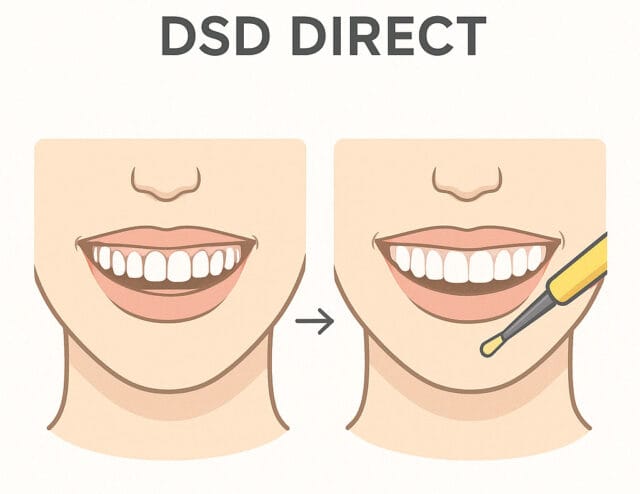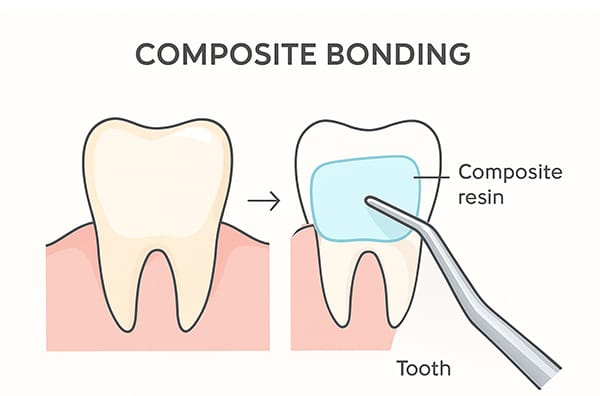Both DSD Direct and conventional composite bonding involve applying composite resin directly to the teeth. However, their philosophy, planning, and patient experience differ significantly.

Planning and Design Philosophy
| Composite Bonding | DSD Direct | |
| Initial Design | Primarily tooth‑focused, often free‑hand | Facially driven digital planning |
| Preview | Limited wax‑up/mirror | 3‑D simulation + emotional mock‑up |
| Collaboration | Dentist‑led | Patient‑centric, collaborative |

Treatment Process
Composite bonding is typically a single, chairside procedure based largely on the clinician’s artistic skill. DSD Direct, while also chairside, is guided by a digital blueprint, ensuring consistency with the agreed design.
Result Predictability and Preview Options
If you value seeing your new smile in advance and making tweaks before committing, DSD Direct’s preview system provides greater peace of mind compared with traditional bonding.
Ideal Use‑Cases
- Composite Bonding: Quick fixes for small chips or single‑tooth issues.
- DSD Direct: Multi‑tooth smile enhancements requiring harmony with facial features.
Making the Right Choice
Your decision should consider your aesthetic goals, time constraints, and desire for involvement in the design process. A DSD‑trained dentist can guide you through both options without bias.
Learn more: What Is DSD Direct?


